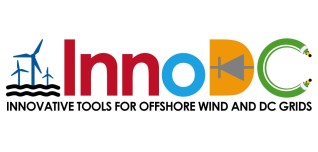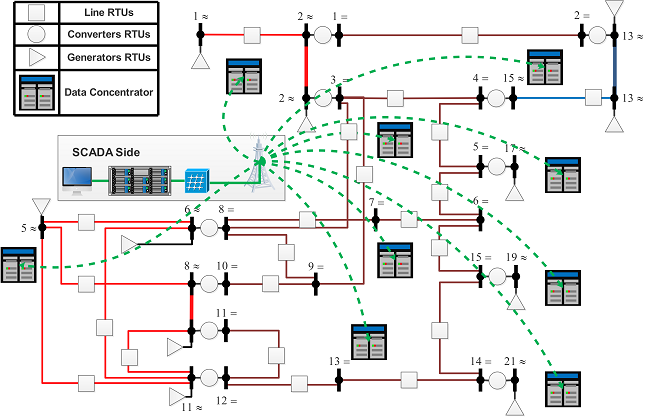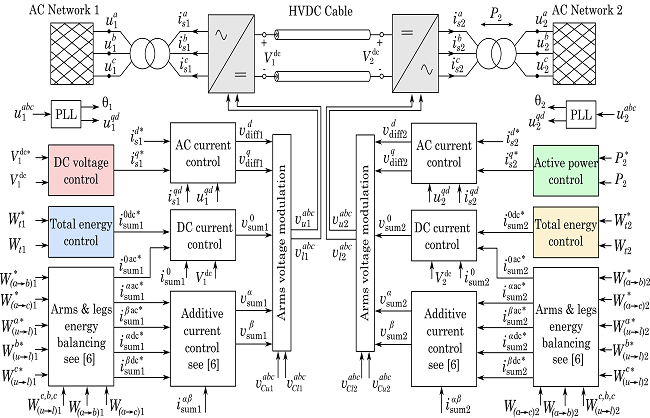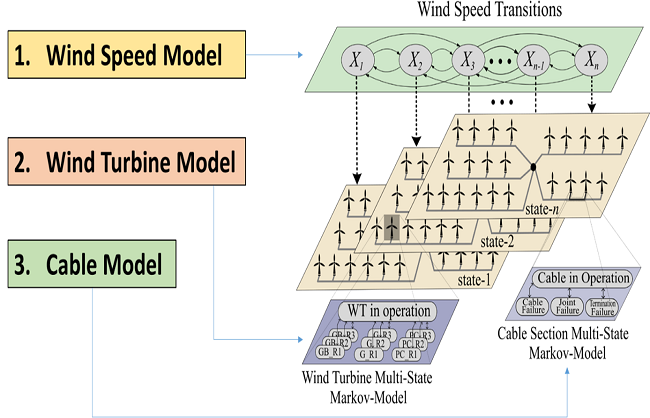InnoDC has published more of its research into network communication and control, and energy availability assessment.
| Communication Requirements for a Hybrid VSC Based HVDC/AC Transmission Networks State Estimation. Energies. Authors: Motaz Ayiad, Emily Maggioli, Helder Leite and Hugo Martins. The modern power network has scaled-up enormously, so power is generated in one country and transferred to another. This network expansion is mainly due to the integration of high voltage direct current (HVDC) technology. As a result, the supervisory control and data acquisition (SCADA) system requires a robust and low-latency (minimal delay) communication network to observe these large-scale power networks. This paper discusses the communication and measuring requirements for a hybrid HVDC/AC centralised SCADA system. It presents a case study to simulate the communication delays and the unified HVDC/AC state estimation processing time, based on the CIGRE B4 HVDC/AC network (a network used in research. CIGRE stands for Conseil International des Grands Réseaux Electriques, where B4 is its HVDC and Power Electronics group). The paper explores the time delays from the measurement’s sensors to the SCADA command centre. It concludes that a fibre optic-based communication network can fulfil a wide-spread centralised SCADA’s requirements. |
| Optimal H Control Design of MMC-based HVDC Links. IEEE Transactions on Power Delivery. Authors: Saman Dadjo Tavakoli, Sajjad Fekriasl, Eduardo Prieto-Araujo, Jef Beerten and Oriol Gomis-Bellmunt. In recent years, global energy policies have placed increasing emphasis on integrating more renewable energy resources into the power networks to mitigate climate change. Offshore wind power plants are expected to contribute significantly, most of which will be located in the North Sea. Offshore windfarm-generated electricity is commonly delivered to consumers along direct-current high-voltage transmission lines (referred to as HVDC systems). The HVDC system control design is complicated, as it involves multiple variables and various constraints. To cope with such complications, the paper suggests a design based on H infinity optimal control for HVDC systems (the ‘H’ is due to its shape, as can be seen in the 2nd image above). The concept is adopted from the classic multi-variable control theory and modified to suit HVDC application. The simulation results confirm that such a design method can significantly improve an HVDC system’s performance and robustness. |
| Analytical Model for Availability Assessment of Large-Scale Offshore Wind Farms including their Collector System. IEEE Transactions on Sustainable Energy. Authors: Gayan Abeynayake, Tom Van Acker, Dirk Van Hertem and Jun Liang. It is important to accurately assess the maximum energy an offshore wind-farm (OWF) can harvest, and to plan maintenance under harsh marine conditions. Cable failure is rare, but repair time is high, so this paper considers whether cable reliability should be included in the calculations. It proposes a holistic approach, combining two processes: (1) multi-state Markov (see the blue figures in the 3rd image above) and (2) the Universal Generating Function, which is an analytical reliability evaluation technique (not previously used for OWFs). The combination of (i) multi-state turbine output, (ii) turbine reliability and (iii) inter-turbine cable reliability, assesses the windfarm’s output at the point of common coupling (a power supply network point, electrically nearest to a particular load, at which other loads are, or may be, connected). The results show that, despite low cable failure rates, it is essential to include them for accurate availability assessment. If you are interested in this topic, watch Gayan Abeynayake’s 9 minute presentation. |
For the full list of InnoDC’s research paper, visit the Journals page.



